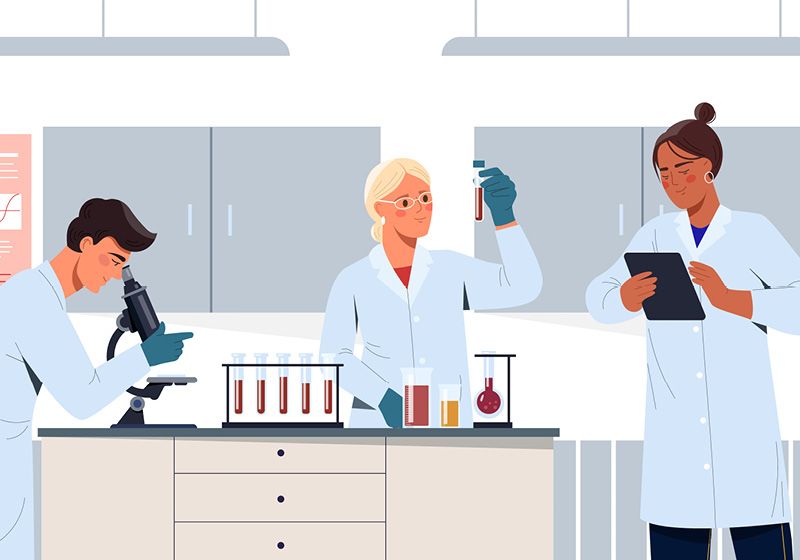Are Identical Twins Really Identical?

Epigenetic differences in identical twins result in distinct gene expression profiles.
In 2004, Michigan police found that DNA recovered from a crime scene matched that of Jerome Cooper, a notorious criminal. But what seemed like an open-and-shut case got complicated when the cops found that Cooper’s identical twin brother, Tyrone, was also in the area at the time of the crime.1
As monozygotic twins that developed from a single fertilized egg which split into two embryos, Jerome and Tyrone share identical DNA sequences. Both the brothers denied involvement in the crime, so the case remained unsolved. In similar instances throughout history, identical twins have walked away from crimes because of inconclusive genetic evidence.2
Jordana Bell, an epigenomics researcher at King’s College London, studies how DNA methylation changes in the human genome influence health and disease.
Jordana Bell
“There are actually multiple factors that differ between identical twins,” said Jordana Bellan epigenomics researcher at King’s College London. Over the past few years, Bell and other researchers have found that monozygotic twins exhibit remarkable differences in epigenetic profiles.3,4 Studying such variation in twins that develop different diseases can help scientists understand the mechanisms underlying various conditions.
A Natural “Experiment” in Nature Versus Nurture
“Twins are (a) really unique model and a really interesting sort of natural experiment,” said Bell. “They’ve been used for ages to understand to what extent genetic and environmental factors contribute to human traits.” For decades, researchers had observed that despite sharing DNA sequences, monozygotic twins differed in susceptibilities to disease and a wide range of behavioral features.
To better understand why, Tim Spectora genetic epidemiologist at King’s College London set up the Twinsuk registry in 1992, that today includes more than 15,000 identical and non-identical twins from across the UK. Since then, scientists have established other cohorts of twins, including in Scandinavia and Australia.5 Among other methods, they use techniques like bisulfite sequencing, electrophoresis, and chromatin immunoprecipitation sequencing to analyze epigenetic modification patterns in genetic samples obtained from twins in these cohorts.
In a study published in 2005, Spector and his colleagues measured and mapped chemical changes such as DNA methylation and histone acetylation in 80 monozygotic twins.4 This revealed differences in both content and distribution of epigenetic modifications, affecting their gene-expression portrait. Moreover, older twin pairs exhibited more differences compared to younger ones, indicating that while twins are born with epigenetic changes, they also accumulate over time.
Epigenetic Differences in Identical Twins Offer Insights on Disease Biology and Diagnosis
Realizing the relevance of epigenetic markers for identifying prognostic, diagnostic, or therapeutic targets, several research groups set out to study monozygotic twins. Bell and her colleagues analyzed the epigenomes of twins, one of whom developed breast cancer while the other did not.
In breast cancer patients, they identified hypermethylation in a gene associated with tumor suppression.6 They also found this modification in samples taken years before tumor diagnosis, indicating its utility as an epigenetic biomarker for the disease. Another group similarly found differences in methylation of a cancer-associated gene from analyzing a case where one twin went on to get leukemia and secondary thyroid cancer.7
Aside from cancer, Bell and others have also discovered epigenetic differences associated with obesity, metabolic disease, and type 2 diabetes by studying twin pairs where one sibling developed the condition while the other did not.8,9
“Now, these could be mechanisms that influence disease pathways or that (are) causal to disease, but it could also be mechanisms that happen after you get (the) disease,” said Bell. “So, our work identifies changes that are related to disease, but…you need more follow ups to figure out what is driving what.”
As researchers increasingly understand how monozygotic twins differ from each other, they are also applying this knowledge in forensics.10 Bell recalled that law enforcement agents contacted a colleague asking if they could differentiate between a pair of identical twins suspected in a crime using epigenetics.
But epigenetics does not provide the full picture, cautioned Bell. Going forward, she hopes that scientists combine information about gene function and protein level data along with epigenetics to better understand disease mechanisms. “One needs to sort of step away from this model of just looking at epigenetics but do more of an integrative study.”
- Jobling MA. Double trouble. Investig Genet. 2013;4(1):12.
- Krawczak M, et al. Distinguishing genetically between the germlines of male monozygotic twins. PLoS Genet. 2018; 14 (12): E1007756.
- Bell JT, Spector TD. A twin approach to unraveling epigenetics. Trends Genet. 2011;27(3):116-125.
- Fraga MF, et al. Epigenetic differences arise during the lifetime of monozygotic twins. Proc Natl Acad Sci USA. 2005;102(30):10604-10609.
- Caprio J. The Finnish twin cohort study: An update. Twin Res Hum Genet. 2013;16(1):157-162.
- It is H, Hyn et. DNA methylation profiling in breast cancer discordant identical twins identifies Dok7 as novel epigenetic biomarker. Carcinogenesis. 2013;34(1):102-108.
- Gataza D, it’s old. Monozygotic twins discordant for constitutive Krca1 promoter methylation, childhood cancer and secondary cancer. Epigenetics. 2012;7(1):47-54.
- Heikkinen A, et al. Twin pair analysis uncovers links between DNA methylation, mitochondrial DNA quantity and obesity. Nat common. 2025;16(1):4374.
- Christiansen C, et al. Enhanced resolution profiling in twins reveals differential methylation signatures of type 2 diabetes with links to its complications. eBioMedicine. 2024;103:105096.
- Vidaki A, Kayser M. From forensic epigenetics to forensic epigenomics: Broadening DNA investigative intelligence. Genome Biol. 2017;18(1):238.




